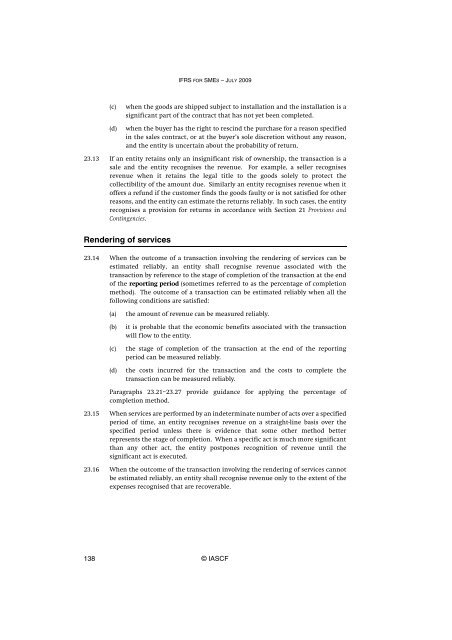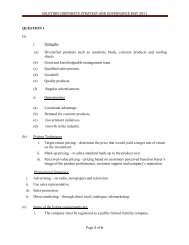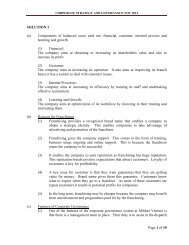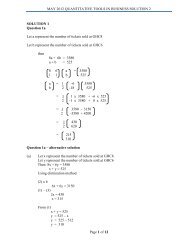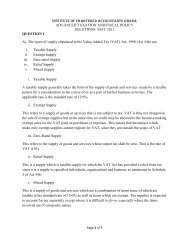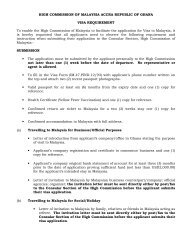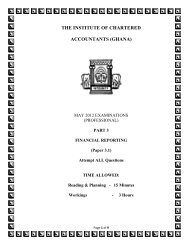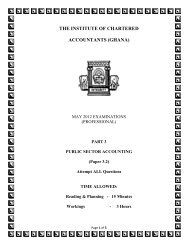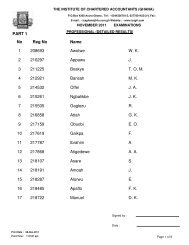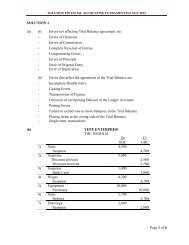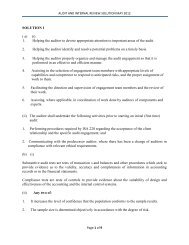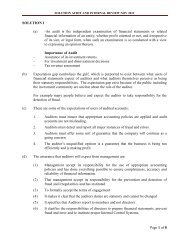(IFRS) for Small and Medium-sized Entities (SMEs)
(IFRS) for Small and Medium-sized Entities (SMEs)
(IFRS) for Small and Medium-sized Entities (SMEs)
Create successful ePaper yourself
Turn your PDF publications into a flip-book with our unique Google optimized e-Paper software.
<strong>IFRS</strong> FOR SMES – JULY 2009(c)(d)when the goods are shipped subject to installation <strong>and</strong> the installation is asignificant part of the contract that has not yet been completed.when the buyer has the right to rescind the purchase <strong>for</strong> a reason specifiedin the sales contract, or at the buyer’s sole discretion without any reason,<strong>and</strong> the entity is uncertain about the probability of return.23.13 If an entity retains only an insignificant risk of ownership, the transaction is asale <strong>and</strong> the entity recognises the revenue. For example, a seller recognisesrevenue when it retains the legal title to the goods solely to protect thecollectibility of the amount due. Similarly an entity recognises revenue when itoffers a refund if the customer finds the goods faulty or is not satisfied <strong>for</strong> otherreasons, <strong>and</strong> the entity can estimate the returns reliably. In such cases, the entityrecognises a provision <strong>for</strong> returns in accordance with Section 21 Provisions <strong>and</strong>Contingencies.Rendering of services23.14 When the outcome of a transaction involving the rendering of services can beestimated reliably, an entity shall recognise revenue associated with thetransaction by reference to the stage of completion of the transaction at the endof the reporting period (sometimes referred to as the percentage of completionmethod). The outcome of a transaction can be estimated reliably when all thefollowing conditions are satisfied:(a)(b)(c)(d)the amount of revenue can be measured reliably.it is probable that the economic benefits associated with the transactionwill flow to the entity.the stage of completion of the transaction at the end of the reportingperiod can be measured reliably.the costs incurred <strong>for</strong> the transaction <strong>and</strong> the costs to complete thetransaction can be measured reliably.Paragraphs 23.21–23.27 provide guidance <strong>for</strong> applying the percentage ofcompletion method.23.15 When services are per<strong>for</strong>med by an indeterminate number of acts over a specifiedperiod of time, an entity recognises revenue on a straight-line basis over thespecified period unless there is evidence that some other method betterrepresents the stage of completion. When a specific act is much more significantthan any other act, the entity postpones recognition of revenue until thesignificant act is executed.23.16 When the outcome of the transaction involving the rendering of services cannotbe estimated reliably, an entity shall recognise revenue only to the extent of theexpenses recognised that are recoverable.138 © IASCF


